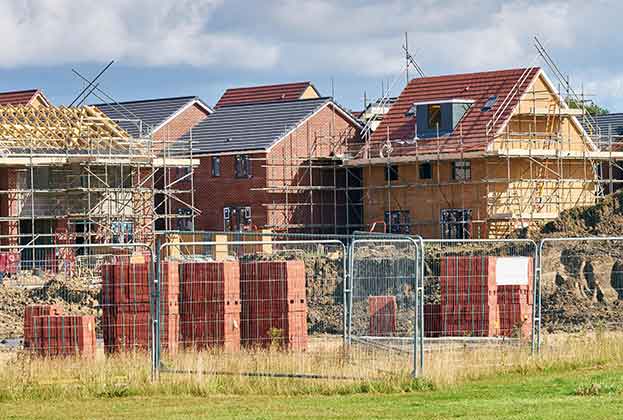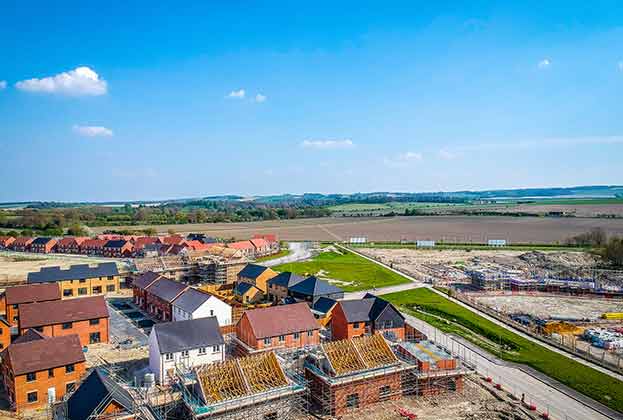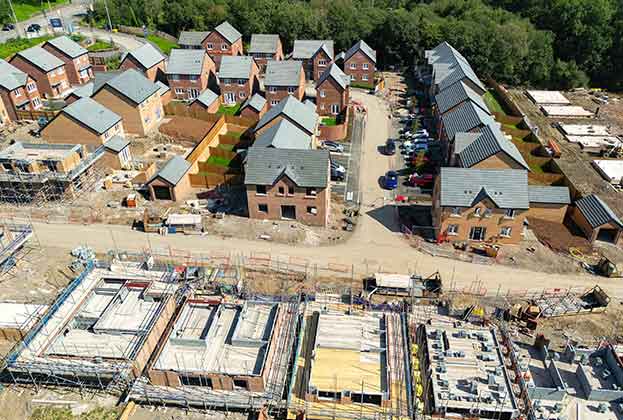The great debate on the most appropriate method of land value capture continues, with the Government currently analysing feedback from the 12-week consultation on its proposed Infrastructure Levy which ran from 17 March to 9 June 2023.
The proposal seeks to significantly reduce the role of the subjective Section 106 negotiation process, instead replacing it with “a mandatory, more streamlined and locally determined infrastructure levy”. It would effectively take the existing Community Infrastructure Levy (CIL) regime and roll it out nationally, albeit with rates set at the local level, as with CIL. As a matter of principle, a uniform regime (albeit tailored to local conditions) is preferable to the current patchwork of S106/CIL areas across the country, assuming that the proposed uniform regime is sound and straightforward to apply. We assess a few of the headline points.
The proposed levy
Unlike CIL the levy will relate to actual values achieved per square metre on completion (or via valuation if the development is not going to be sold) and applied above a minimum threshold below which no levy is charged. For example:
- LPA sets levy rate at 30%
- Minimum threshold set at £3,000 psm GDV
- Development built and sells at £4,000 psm GDV
- Levy can therefore be charged on the £1,000 psm surplus
- 30% x £1,000 = £300 psm levy charge
The above is a simple example but the proposals do allow for different rates for regeneration or replacement development, for example.
The levy rates and minimum thresholds would be set and collected locally. Provisional liabilities would be calculated based on assumptions from within charging schedules. These charging schedules will include assumed GDVs per square metre for areas and typologies, as well as the actual levy rates and thresholds. An adjustment payment (or reimbursement) would be made at the end once final GDV is known (or valued). A ‘local land charge’ will be registered against the site until payment of the provisional liability is made and penalty fees would be chargeable for late final adjustment payments.
The Government says that “this will allow developers to price the value of contributions into the value of the land and for levy liabilities to reflect market conditions.” One has to question whether that can be right, where developers will have to price in forecasts of GDV in anticipation of a back-end levy. Fixing a definite charge at the start of the process would at least allow the risk of future changes to simply be a factor of the required profit return.
If introduced, the proposal could lead to strong dividing lines on an arbitrary geographical basis, depending on how differently neighbouring authorities select their ‘right to require’ percentages and levy thresholds/minimums. To work, such a policy might need some form of re-imagined regional spatial strategies.
Affordable housing provision and viability
Whilst on the face of it a simple levy would be preferable to negotiated S106 agreements, matters become messy when the affordable housing (AH) provisions are introduced. The Government, in seeking to combat a perceived issue with affordable housing provisions being reduced on viability grounds, proposes granting local authorities a ‘right to require’ what proportion of the levy is to be received as cash and what is to be received ‘in kind’ as affordable homes. The immediate question about comparing like for like arises. How will affordable housing be valued?
The Government’s example takes an £800,000 levy liability and assumes an authority sets its right to require at 60 per cent (i.e. an affordable housing provision of £480,000), with the balance paid in cash. The suggestion is that the monetary value is assessed by cumulative discount on open market values (OMV). If an AH unit could be sold at a discount worth £48,000, the proposal says that 10 x AH units could therefore be provided.
The example provided in Annex C of the consultation appears to work mathematically, where assumptions are made on the ‘discount’ to OMV applicable to different tenure types, but there will inevitably need to be a subjective assessment on the ‘discount’ to OMV for units that will never have a market-tested value.
The proposal seemingly misses the point that development must be viable to come forward, and if the right to require tips schemes into being economically unviable and forces them to remain so, then no housing will come forward on those sites.
What will the proceeds be spent on?
The Government is seeking a more transparent regime, and one which expects the contributions to be up front, whilst making it clear as to what infrastructure would be required to make development acceptable. Local planning authorities would be required to produce Infrastructure Delivery Strategies setting out what local infrastructure will be funded by levy proceeds. There would be a distinction between ‘integral’ infrastructure fundamental to the development which would be delivered on-site, and wider ‘levy-funded infrastructure’.
There is a real opportunity for district-wide infrastructure if the new approach differs from the current system where schemes are often delayed in seeking to procure necessary rights or connectivity from a highways authority or utilities provider, often at significant cost. Land assembly and proposed development could come forward far more easily if these stakeholders were mandated under Infrastructure Delivery Strategies to enable specified developments, particularly if it was only at cost rather than involving ransom payments.
Concluding thoughts
Whilst the Government is understandably anxious to capture value generated by the grant of planning, there has to be a fair capture that has regard to the relationship between the risk and cost of unlocking that value. If the planning system suddenly decided to bestow upon sites unsolicited allocations and permissions, then there would be a much greater case for the state taking the lion’s share of the value uplift. In the current climate though, obtaining planning permission is often a very expensive, time-consuming and risky process. The levy has to be designed so as not to dissuade the pursuit of planning permission.
The aim of a straightforward, transparent levy is a laudable one but the proposals introduce scope for much arguing, in particular arguments on the cash value of the ‘in kind’ affordable provision, and any difference between charging schedule assumed GDVs and a developer’s site-specific GDV estimate for the purposes of provisional liabilities. Taken as a whole, it does not look like the proposed levy would lead to any quicker resolution of planning gain questions. The Government might be ‘feeling IL’, but the faster delivery of development will likely require a different approach.
Further information
Contact Lloyd King




.jpg)


.jpg)

.jpg)
